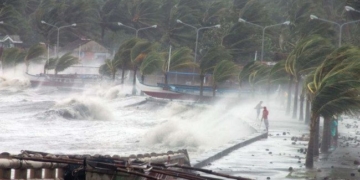“The Light Burst,” also known as Cherenkov radiation, is a type of electromagnetic radiation characterized by shorter wavelengths, primarily manifested as blue light.
Since the advent of Einstein’s theory of relativity, the speed of light has become a crucial constant in the physical world, noted as c = 299,792,458 m/s. In other words, the speed of light is approximately 300,000 km per second.
Einstein believed that no object in this world, whether microscopic or macroscopic, could reach the speed of light, let alone exceed it. Thus, the speed of light has become an essential parameter in many physical formulas, and numerous famous laws have been derived from it, such as the mass-energy equivalence equation E=MC², where E stands for energy, M represents mass, and C denotes the speed of light.
In other words, energy and mass can be transformed into each other; the mass of an object multiplied by the square of the speed of light is the energy contained within that object.
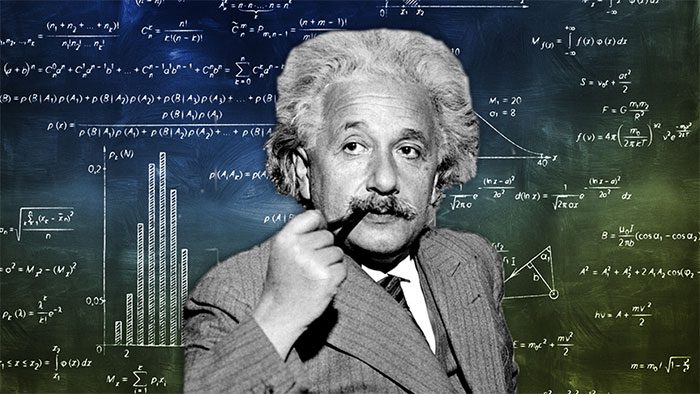
Einstein believed that no object in this world could reach the speed of light. (Illustrative image: Zhihu).
Einstein also derived the mass increase effect due to speed and the time dilation effect due to speed from the limitation of the speed of light, meaning that the faster an object moves, the more apparent the mass increase effect becomes, and higher speeds will cause time to pass more slowly. When reaching the speed of light, momentum becomes infinite, and time stands still.
This restricts the speed of movement in our world, and the motion of any object cannot reach the speed of light, let alone exceed it.
All of the above illustrates one thing: in our world, the speed of light is a limit that no object’s motion can surpass. Otherwise, momentum would be infinite, and the universe would collapse; time would halt, and everything would be still.
This is referred to as the light speed barrier. However, why do many researchers still believe that the “light burst” phenomenon could allow particles to travel faster than the normal speed of light?
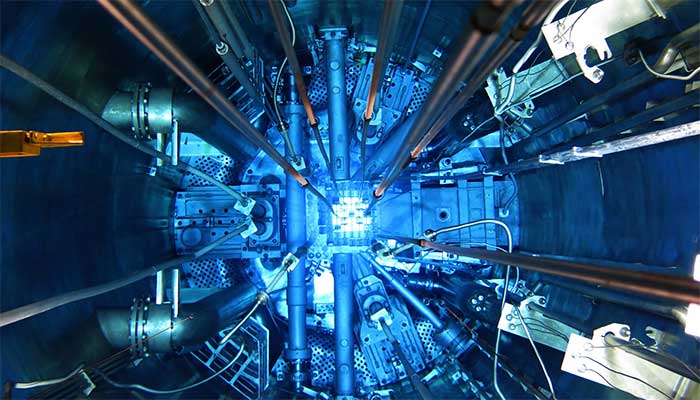
In our world, no object’s motion can exceed the speed of light. (Illustrative image: Zhihu).
We know that sonic boom occurs when an object moves faster than the speed of sound, creating a shock wave formed by the “accumulation” of sound waves from a supersonic object. Accordingly, the light burst is understood as the wave generated when an object moves faster than the speed of light.
Theoretically, materials that exceed the speed of light in a medium can only be extremely small particles, such as neutrinos, which have an extremely small mass and virtually no electromagnetic force. In this way, in environments like water, ice, glass, etc., their speed can exceed that of light.
Since neutrinos are electrically neutral, they do not interact with matter, allowing trillions of neutrinos to pass through any object without leaving a trace. However, among them, one or two special neutrinos will collide with atomic nuclei of matter; the resulting high-speed collision will shatter the atomic nucleus, creating what is known as “secondary particles”. The initial collision speed will be just below that of light, but over time, the speed of these “secondary particles” may exceed the speed of light, leading to the phenomenon of “light burst.”
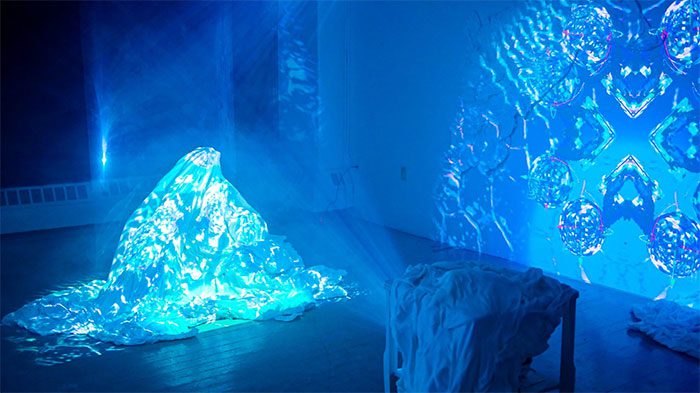
Cherenkov radiation is similar to the sonic boom phenomenon caused by supersonic flight. (Illustrative image: Zhihu)
To detect these neutrinos, scientists have established the IceCube Neutrino Observatory in Antarctica. This observatory does not use a large diameter telescope to observe space like conventional observatories but is set up 1.6 km deep in ice, equipped with over 5,000 sensors that record neutrino events following their collisions with atomic nuclei, thereby determining where these neutrinos originate from.
“The light burst,” also known as Cherenkov radiation, is a type of electromagnetic radiation characterized by shorter wavelengths, primarily manifested as blue light. It was discovered by Igor Tamm and Vich Cherenkov in 1934, hence it is named after him.
Cherenkov radiation is similar to the sonic boom phenomenon caused by supersonic flight, meaning that when a charged particle moves faster than the speed of light in a medium, it generates a conical electromagnetic wave in that medium, characterized by a blue light.
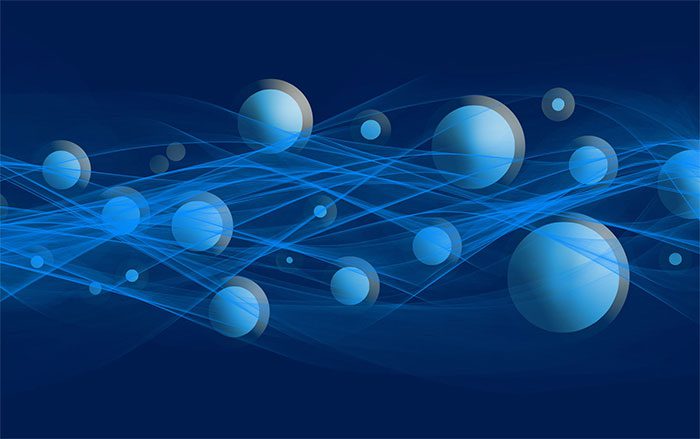
Cherenkov radiation is a type of electromagnetic radiation characterized by shorter wavelengths. (Illustrative image: Zhihu).
In reality, not only can the secondary particles from neutrino collisions exceed the speed of light in mediums, but many particles can also move faster than the speed of light in environments like water and ice, such as the radiation phenomenon from nuclear reactions and acceleration through particle accelerators, cosmic rays, etc.
Therefore, we must strictly define the limits of the speed of light; the constant c = 299,792,458 m/s is only the speed of light in a vacuum, and the speed of light in a vacuum is referred to as the maximum speed.
The so-called superluminal phenomenon of the light burst does not violate Einstein’s theory of light speed; the speed of light in a vacuum remains the unbreakable speed limit for motion in the universe.


















































